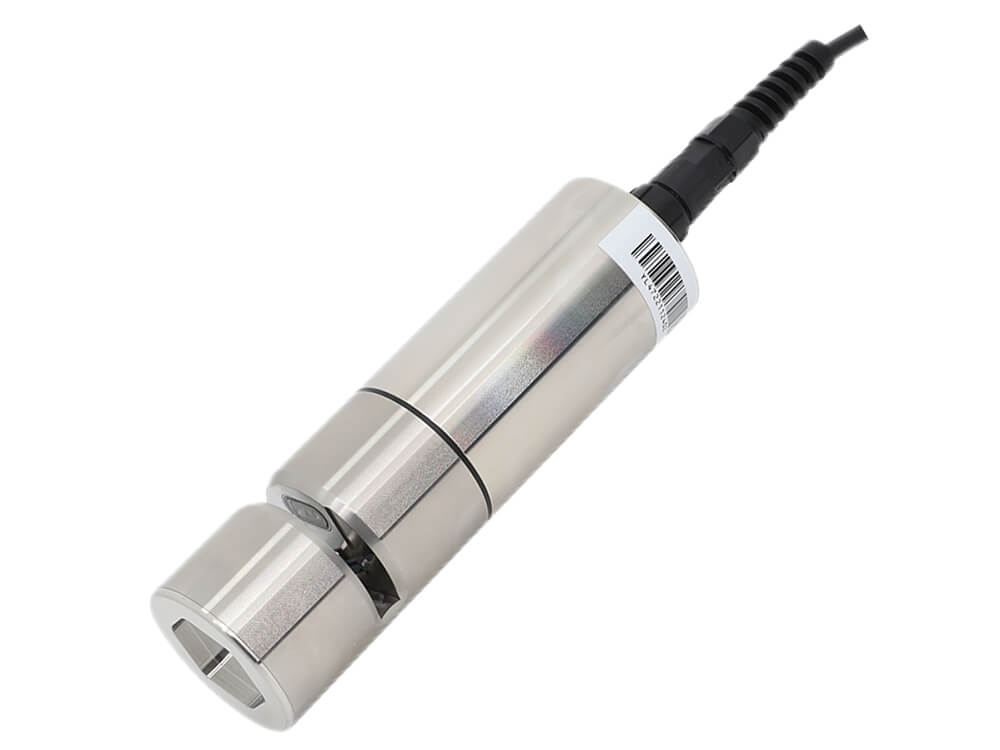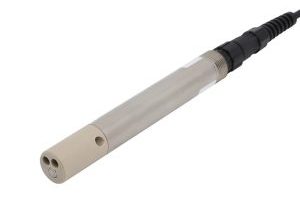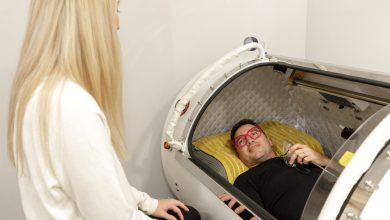Chemical Oxygen Demand Sensors: Paving the Way for Sustainable Industrial Water Treatment

In an era where environmental sustainability is at the forefront of global concerns, industries around the world are under increasing pressure to reduce their environmental impact. One of the key contributors to water pollution is industrial wastewater, which often contains harmful organic compounds and chemicals that, if left untreated, can degrade natural water bodies. To address this, industries are turning to advanced technologies, such as chemical oxygen demand sensor, to monitor and optimize their wastewater treatment processes.
COD sensors are instrumental in determining the pollution load of industrial effluents by measuring the amount of oxygen required to oxidize organic matter in the water. By offering real-time monitoring and accurate data, COD sensors help industries ensure that their wastewater treatment systems are functioning optimally, reducing both environmental impact and operational costs. This blog post will explore the importance of COD sensors in industrial water treatment, their role in achieving sustainability goals, and how they contribute to cleaner, safer water resources for all.
Understanding the Role of Chemical Oxygen Demand (COD) in Water Treatment
Before diving into the specifics of COD sensors, it is important to understand what Chemical Oxygen Demand (COD) is and why it is so critical in water quality monitoring.
COD measures the amount of oxygen required to chemically oxidize the organic and inorganic substances present in a water sample. A high COD value indicates the presence of significant amounts of organic pollutants, which can deplete oxygen levels in receiving water bodies, leading to hypoxic conditions where aquatic life cannot survive. High COD levels in effluent are therefore a clear indicator of water pollution.
In wastewater treatment, COD testing is essential for determining the level of treatment required to remove harmful organic compounds. High COD levels often demand more advanced treatment techniques, such as biological treatments (e.g., activated sludge) or chemical oxidation processes. COD sensors offer a direct and efficient way to monitor these levels and ensure that the treated water is safe for discharge.
How Do COD Sensors Work in Industrial Water Treatment?
COD sensors function by measuring the oxygen demand required to break down organic matter in a water sample. These sensors can be used in a variety of industrial wastewater applications, including food and beverage, pharmaceuticals, textiles, chemicals, and paper manufacturing. They operate based on two main technologies: electrochemical and optical sensing.
-
Electrochemical Sensors: These sensors measure the electrical current generated when organic pollutants are oxidized at an electrode. The amount of current is proportional to the amount of oxygen consumed during the oxidation process, which directly correlates with the COD level.
-
Optical Sensors: Optical COD sensors work by passing light through a water sample. The organic pollutants absorb some of this light, and the amount of light absorbed is used to estimate the concentration of organic matter in the sample. This absorption rate correlates with the COD level.
By continuously measuring the COD of wastewater, these sensors provide valuable data on the efficiency of the treatment process. Real-time monitoring helps plant operators make informed decisions and adjust processes accordingly to maintain high-efficiency treatment.
Key Benefits of COD Sensors in Industrial Water Treatment
-
Real-Time Monitoring for Improved Control
In traditional water treatment systems, wastewater samples are taken at intervals and sent to laboratories for analysis. This process can take hours, and by the time results are available, conditions may have already changed, leading to inefficiencies and potential violations. COD sensors provide real-time data, allowing operators to monitor water quality continuously and make immediate adjustments to the treatment process as needed.
Real-time monitoring enhances control over the wastewater treatment process, ensuring that the system responds promptly to fluctuations in organic load. For example, if the COD level spikes due to a sudden surge in pollutants, operators can quickly increase aeration, chemical dosing, or biological treatment to keep the effluent within permissible limits.
-
Optimizing Treatment Processes
Efficient water treatment is not only about meeting environmental standards but also about minimizing operational costs. Wastewater treatment can be an energy- and chemical-intensive process, and without accurate monitoring, industries may waste valuable resources. By providing precise measurements of COD levels, COD sensors enable industries to optimize their aeration, chemical dosing, and filtration processes.
For instance, if COD levels are low, operators may reduce the dosage of treatment chemicals or decrease aeration, saving both energy and chemicals. Conversely, high COD levels might signal the need for more intensive treatment. This optimization ensures that treatment processes are neither under- nor over-applied, improving cost-efficiency and reducing the plant’s environmental footprint.
-
Meeting Regulatory Compliance
Industries are subject to strict regulations regarding the quality of their wastewater effluent. Regulatory agencies set legal limits for the amount of organic matter, as indicated by COD levels, that can be discharged into natural water bodies. Exceeding these limits can result in severe penalties, environmental degradation, and damage to the company’s reputation.
COD sensors help industries maintain compliance with local and international water quality regulations. By continuously monitoring the COD of wastewater, plants can ensure that their effluent remains within permissible limits, reducing the risk of regulatory violations. In case of an unexpected increase in COD levels, the plant can take immediate corrective actions, preventing non-compliance before it becomes an issue.
-
Early Detection of Pollution Surges
Industrial wastewater quality can fluctuate due to changes in production processes, raw materials, or maintenance activities. A sudden surge in organic load can overwhelm the treatment system, leading to inefficiencies and potential violations. COD sensors are crucial for the early detection of pollution surges, enabling plant operators to respond quickly.
For example, during a cleaning cycle or equipment maintenance, the wastewater may experience a temporary spike in COD levels. Early detection of this spike allows operators to adjust treatment parameters before the surge leads to excess pollution or operational issues. This proactive approach helps industries maintain effective treatment systems and reduces the risk of environmental harm.
-
Sustainability and Environmental Protection
As industries face mounting pressure to adopt more sustainable practices, COD sensors play a key role in improving resource efficiency and reducing environmental impact. By providing real-time data and optimizing treatment processes, these sensors help industries minimize the use of chemicals and energy, reducing their carbon footprint.
Moreover, by ensuring that effluent is treated to meet regulatory standards, COD sensors contribute to protecting water quality in local rivers, lakes, and oceans. Clean water is essential for maintaining healthy ecosystems, and by using COD sensors to monitor and control wastewater discharges, industries can significantly reduce their impact on the environment.
-
Data Collection and Reporting
In addition to their real-time monitoring capabilities, COD sensors also provide valuable data that can be used for performance analysis and compliance reporting. Data collected over time helps plant operators identify trends, assess the effectiveness of treatment processes, and make informed decisions for future improvements.
Furthermore, this data is essential for reporting to regulatory authorities. Many environmental agencies require industries to submit regular reports on water quality, including COD levels in treated effluent. With COD sensors, this reporting becomes faster, more accurate, and less resource-intensive, as the sensors automatically log data and generate reports that meet regulatory standards.
Applications of COD Sensors in Different Industries
-
Food and Beverage Industry: The food and beverage sector generates large volumes of wastewater with high organic content. COD sensors help monitor and optimize treatment processes to ensure the effluent meets environmental standards while minimizing the use of chemicals and energy.
-
Chemical Manufacturing: Chemical manufacturing plants often produce wastewater that contains hazardous substances and high COD levels. COD sensors allow for continuous monitoring of wastewater, ensuring that harmful chemicals are properly treated before being discharged.
-
Textile Industry: The textile industry uses large amounts of water in dyeing and finishing processes, which results in wastewater with high COD levels. COD sensors help optimize the treatment process and ensure that effluent quality is maintained.
-
Pharmaceutical Industry: Pharmaceutical production can generate wastewater containing high concentrations of organic compounds and solvents. COD sensors provide real-time monitoring, ensuring that treated effluent meets regulatory standards and does not harm the environment.
-
Pulp and Paper Industry: The pulp and paper industry produces wastewater with significant organic load, including lignin and other by-products. COD sensors help ensure that the wastewater is treated effectively, reducing environmental impact and ensuring compliance with discharge regulations.
The Future of COD Sensors in Water Treatment
As industries continue to focus on sustainability and environmental responsibility, the role of COD sensors will expand. Future advancements may include:
-
Integration with IoT: COD sensors will be integrated with IoT technologies, enabling remote monitoring, data analysis, and automation of treatment processes.
-
Improved Sensor Accuracy and Durability: Advances in sensor technology will improve the accuracy and durability of COD sensors, making them suitable for more challenging environments.
-
Cost Reduction: As technology becomes more widespread, the cost of COD sensors will continue to decrease, making them more accessible to a broader range of industries.
Conclusion
Chemical Oxygen Demand sensors are essential tools for ensuring efficient, sustainable, and environmentally responsible industrial wastewater treatment. By providing real-time data, optimizing treatment processes, and ensuring regulatory compliance, COD sensors help industries minimize their environmental impact while reducing operational costs. As the demand for cleaner water and sustainable industrial practices grows, COD sensors will play an increasingly critical role in shaping the future of water treatment.









